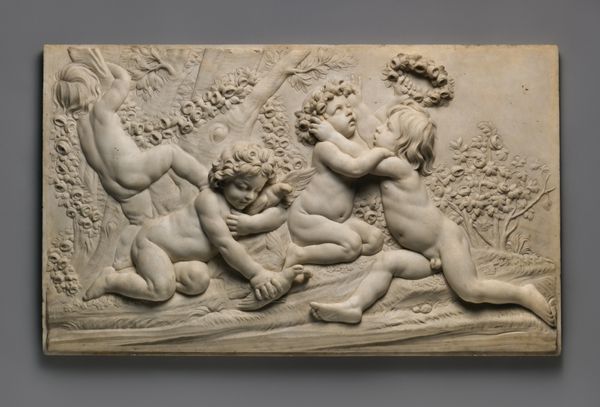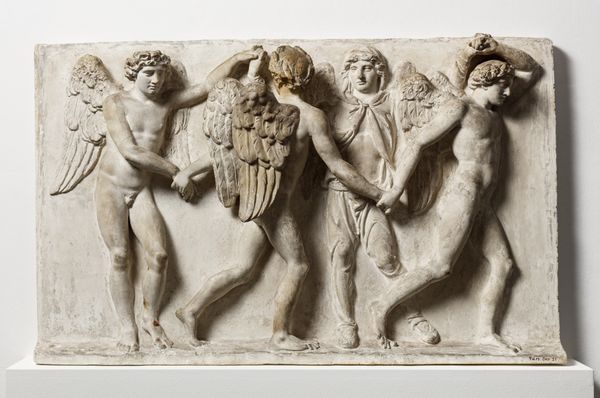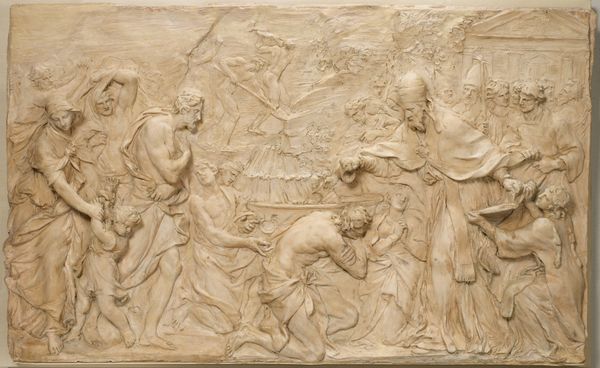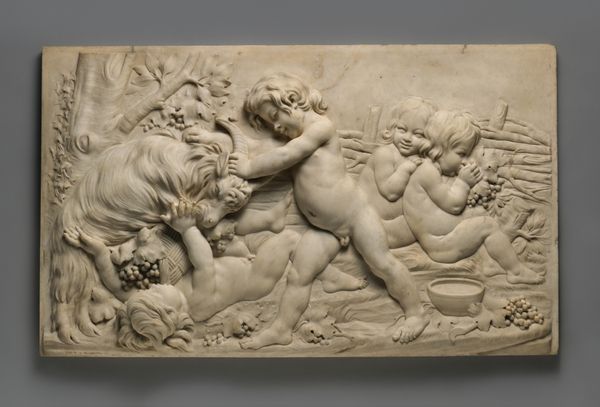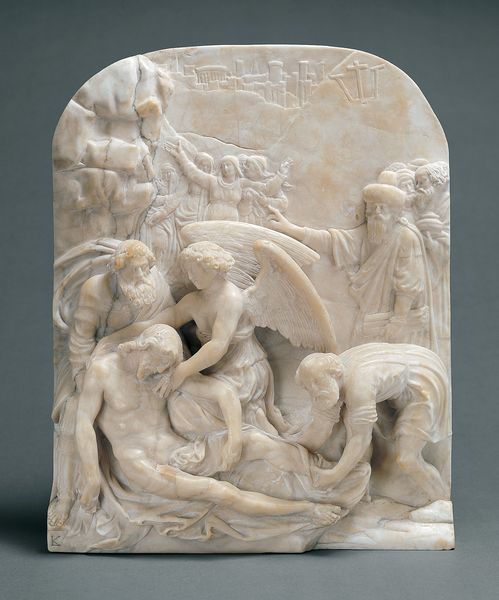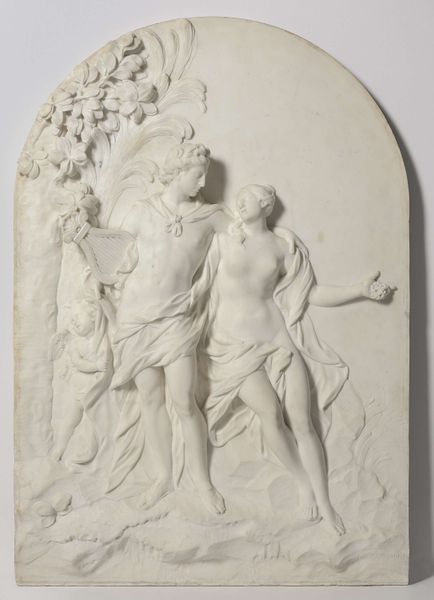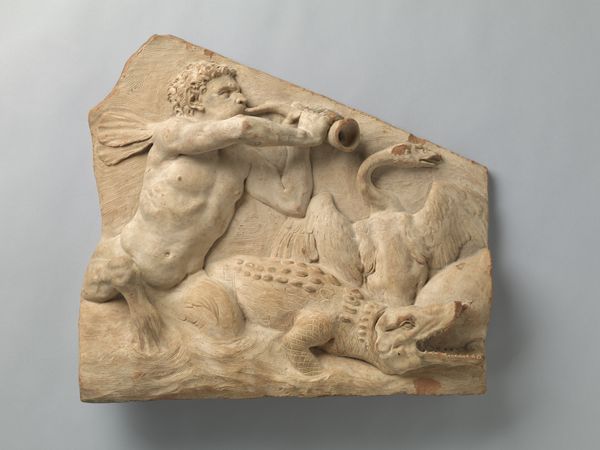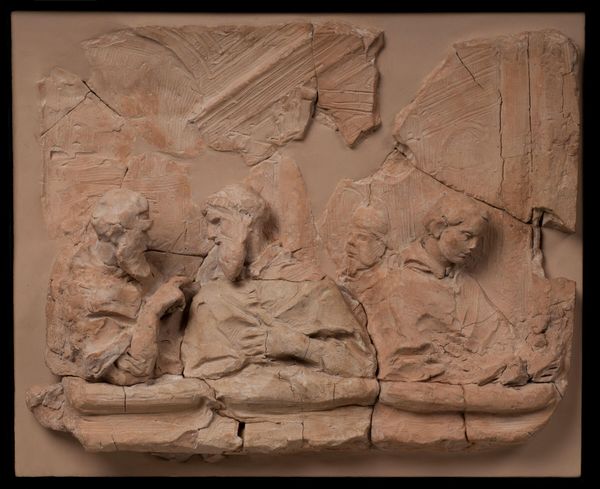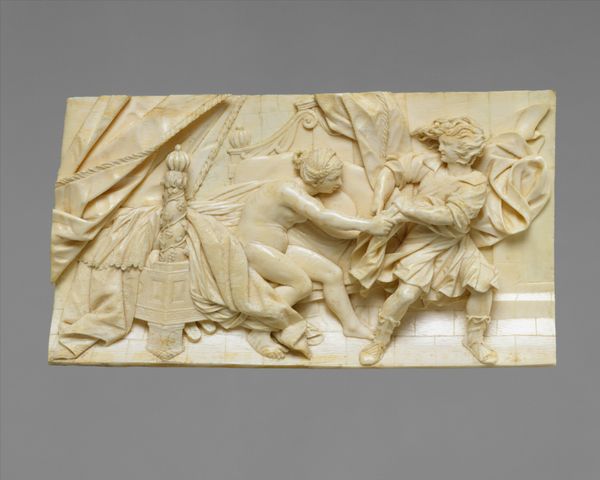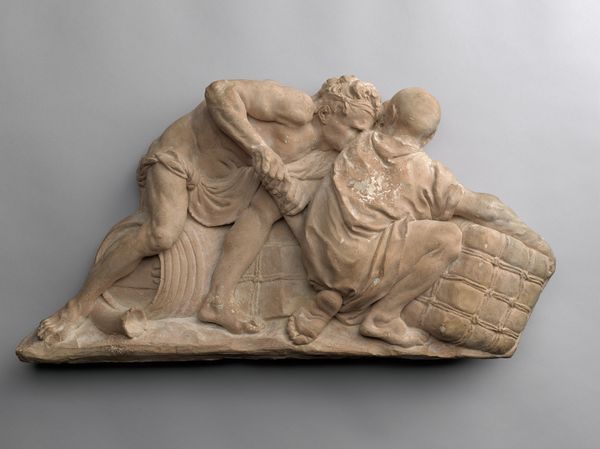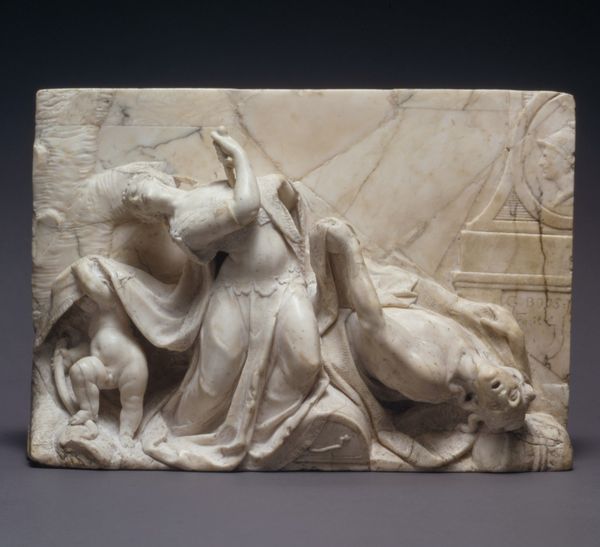
relief, sculpture, marble
#
narrative-art
#
baroque
#
sculpture
#
relief
#
figuration
#
classicism
#
sculpture
#
group-portraits
#
history-painting
#
marble
Dimensions: height 72 cm, width 83.5 cm, depth 20 cm
Copyright: Rijks Museum: Open Domain
This terracotta relief, "The Judgement of Junius Brutus," was created by Artus Quellinus in the 17th century. The composition is a tableau of raw emotion, framed by the rough, textured surface of the clay. Quellinus uses depth sparingly, creating a shallow stage for his figures. The eye is drawn to the stark contrast between the impassive Brutus and the violent executioners. Brutus’ extended arm creates a strong diagonal line, mirroring the executioner’s downward swing, visually binding justice and brutality. The rough texture of the terracotta accentuates the drama, lending a tactile quality to the scene. The figures' muscular forms are rendered with a Baroque sensibility, emphasizing dynamic movement and emotional intensity. The limited depth flattens the scene, creating a sense of claustrophobia, mirroring the inescapable nature of fate. This work challenges us to consider the relationship between power, justice, and sacrifice, leaving us to ponder the complexities of moral decisions.
Comments
rijksmuseum about 2 years ago
⋮
The most elaborately ornamented space in the Town Hall was the Vierschaar (Tribunal), where death sentences were pronounced. Three marble reliefs above the seats of the judges illustrate exemplary verdicts from antiquity or the Bible. This is the model for the relief of the Judgement of Brutus, a Roman consul who had his own sons beheaded for conspiring against him – a paragon of justice.
Join the conversation
Join millions of artists and users on Artera today and experience the ultimate creative platform.

